#xenarthra
Explore tagged Tumblr posts
Text

Great Ant-Eater by Cuthbert Edmund Swan. From Wild Beasts of the World, Vol. Two. Written by Frank Finn, published in 1909.
Internet Archive
401 notes
·
View notes
Text

David Attenborough petting a giant anteater, 1957.
#anteater#anteaters#david attenborough#giant anteaters#giant anteater#myrmecophaga tridactyla#xenarthra
65 notes
·
View notes
Text

look at my son Alvin he's the only known albino giant anteater on Earth :)
104 notes
·
View notes
Text
Spectember 2023 #05: Shiny Mammal
Someone who identified themself only as "Hanna" requested a "mammal that's shiny and iridescent like some insects and spiders":

Lustrophractus hannae is a relative of modern hairy armadillos that has adapted for a semiaquatic lifestyle.
About 40cm long (~16"), its unusually shiny carapace originally evolved thanks to its ancestors' burrowing habits. Much like golden moles and some snakes, these armadillos' scutes and hairs developed microridges that reduced friction and repelled dirt particles, with the side effect of becoming strikingly iridescent – and, conveniently, also rather water repellent, enabling Lustrophractus' lineage to take up aquatic omnivorous foraging habits.
The iridescence also serves a defensive function, using a bright flash of color to startle and confuse predators.
#spectember#spectember 2023#speculative evolution#armadillo#xenarthra#mammal#art#science illustration
304 notes
·
View notes
Text

Holmesina
14 notes
·
View notes
Text

Sloth fakemon based on 3 toed sloths and their buddies: algae and moths. I tried to go for the Sugimori style.
#pokemon#fakemon#sloths#sloth#xenarthra#xenarthrans#pilosa#grass pokemon#bug pokemon#slakoth#my art#fauxkemon
5 notes
·
View notes
Text
Giant Ground Sloth (Megatherium americanum) – Furry Tank

Megatherium (/mɛɡəˈθɪəriəm/ meg-ə-THEER-ee-əm; from Greek méga (μέγα) 'great' + theríon (θηρίον) 'beast') is an extinct genus of ground sloths endemic to South America that lived from the Early Pliocene through the end of the Late Pleistocene.
It is best known for the elephant-sized type species Megatherium americanum, primarily known from the Pampas, but ranging southwards to northernmost Patagonia and northwards to southern Bolivia during the late Middle Pleistocene and Late Pleistocene.
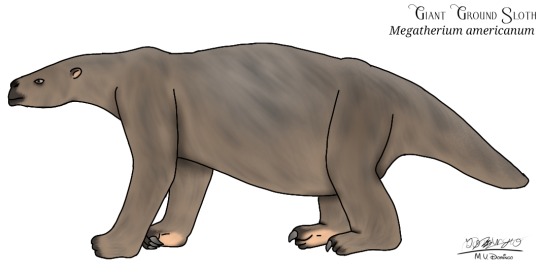
#ognimdo2002#earth responsibly#earth#art#ibispaint art#art ph#ibispaintx#rapunzel's tangled adventure#science fantasy#megatherium#sloth#ground sloth#pilosa#megatheriidae#Xenarthra
5 notes
·
View notes
Text
Kraglievichia
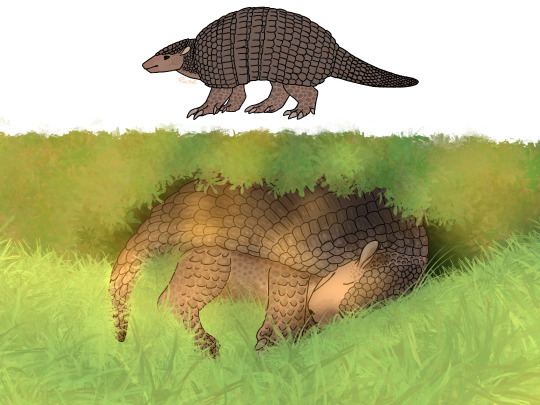
Kraglievichia was a genus of cingulate mammal from the Late Miocene to Early Pliocene periods. Its type species is K. paranense. Its second known species is K. carinatum. The known specimens were found in Argentina and Uruguay. Though initially described in 1883, Kraglievichia was not properly named until 1927.
Its autapomorphy from similar relatives is its distinct osteoderm ornamentation, which consists of significantly deep longitudinal depressions with a longitudinal central elevation. It is the most conspicuously ornamented pampatheriid known currently.
The known specimens of Kraglievichia consist of osteoderms, a left femur, and a well-preserved skull without any teeth. Due to their extreme similarity, Kraglievichia is regarded as the sister taxon to Scirrotherium, the genus that K. carinatum was originally assigned to. It was hypothesized that Holmesina evolved from Kraglievichia, but due to the fact there are no known immediate South American basal forms of Holmesina, this is unlikely. A third species, "K." floridanus, was named in 1976, but this was later found to be a species of Holmesina instead.
Citations: The 1927 description seems entirely lost, at least online; if you happen to have access to this paper please let me know. 1883 description (page 66 of pdf) as Chlamydotherium; "Scirrotherium" carinatum description; "S." carinatum reassignment.
Wikipedia article: here
#mammal#mammalia#paleoart#paleontology#artwork#original art#human artist#kraglievichia#pampatheriidae#cingulata#xenarthra#obscure fossil animals#obscure fossil mammals#obscure fossil tetrapods
11 notes
·
View notes
Text
Animal of the Day for November 11: Giant Anteater (Species Myrmecophaga tridactyla)

As their name suggests, Giant Anteaters mainly eat ants and termites, using their long tongues and powerful claws to get into their nests. A Giant Anteater's arms are powerful enough and claws sharp enough that they can tear down termite mounds, which are as strong as concrete. If approached, a Giant Anteater may stand straight up and T-pose, which is it telling you to kindly go elsewhere, it'd be best to comply to their request since they're one of the few animals that jaguars are afraid of.
#animal of the day#november 11#november#giant anteater#mammals#xenarthra#south america#central america
2 notes
·
View notes
Text

Drawing of Kaycie The Armadillo by Embrim
#Embrim#kaycie#armadillo#Xenarthra#furry anthro#drawing#fanart#furry#commission#anthro art#oc#furry art#anthro#human#fan character#fan creation#tanned#blue hair#beast#girl#oc art#oc artwork
3 notes
·
View notes
Text

Ground sloth doodles. I apologize for any inaccuracies.
#megatherium#i think this is megatherium? correct me if I’m wrong#ground sloth#xenarthra#mammal#paleoart#digital doodle#digital doodles#im too lazy to color this sorry
9 notes
·
View notes
Text
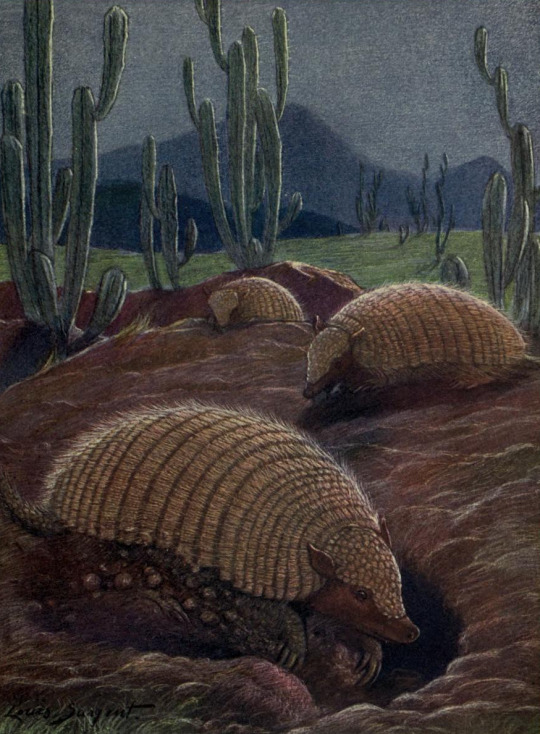
Hairy Armadillos by Louis A. Sargent. From Wild Beasts of the World, Vol. Two. Written by Frank Finn, published in 1909.
Internet Archive
294 notes
·
View notes
Text

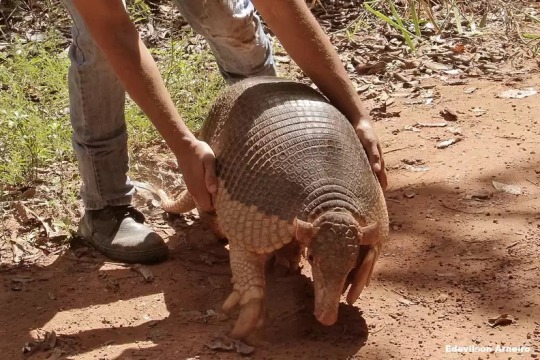
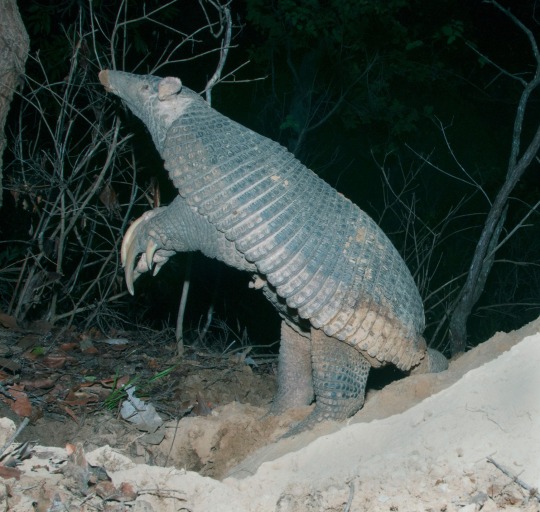

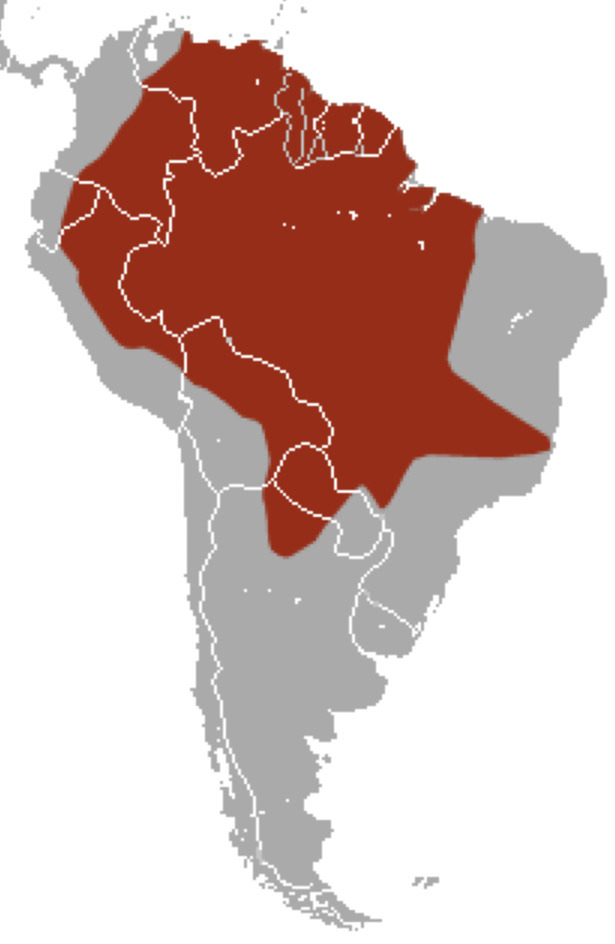
Giant armadillo
Priodontes maximus
Family Chlamyphoridae, order Cingulata, superorder Xenarthra
Also known as the tatu-canastra, tatou, ocarro, and tatú carreta.
They prefer to eat termites and ants and will often consume the population of an entire termite mound. They also sometimes eat worms, larvae, spiders, snakes, carrion, and plants.
They are the largest extant (meaning not extinct) species of armadillo, usually weighing 18.7–32.5 kg (41–72 lb). There has been a wild specimen weighing 54 kg (119 lb) and a captive one weighing 80 kg (180 lb).
They are solitary and nocturnal. They spend the daytime in burrows.
Their burrows are very large, openings average at 43 cm (17 in) wide and typically face west.
These animals have not been studied much in the wild, but it has been discovered that many animals use their burrows. Dozens of animals, including the rare short eared dog, were observed using the same armadillo burrow in one day. They’re like, the construction workers of their area.
This animal is classified as vulnerable.
@jackalspine @fifiibibii
13 notes
·
View notes
Text
It’s Wet Beast Wednesday
2K notes
·
View notes
Text

Zootopia has a 2/3 for xenarthra representation. I don't think there were any anteaters?
3 notes
·
View notes
Text
I want this man so bad I accidentally started learning about giant ground sloths 😭
#how am I supposed to get over you when you’re the reason I know the words Xenarthra megalonyx and paramylodon#I thought my type is himbos but NOPE I want someone who can draw evolutionary trees from memory
0 notes